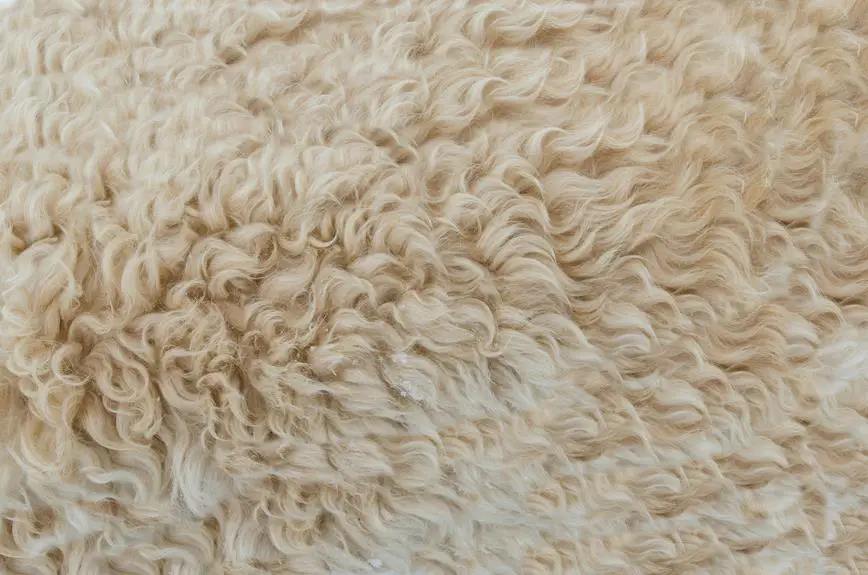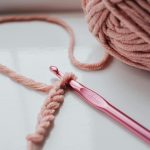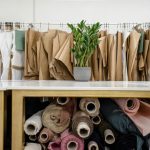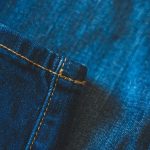When you're trying to spot high-quality brocade, it's essential to focus on several key characteristics. Start by examining the fabric's weight and density; heavier materials usually indicate better durability. Pay attention to the intricacy of the weave and the vibrancy of the colors, as these aspects reveal the craftsmanship behind the fabric. But that's just the beginning—there are other factors that can make a significant difference in quality. Discovering how these elements come together can truly elevate your understanding of brocade.
Table of Contents
Understanding Brocade Fabric
Brocade fabric is a richly textured textile known for its intricate patterns and luxurious appearance. You might find it woven with metallic threads, giving it an opulent shine that's perfect for formal occasions or statement pieces. When you touch brocade, you'll notice its weight and structure, which set it apart from lighter fabrics.
Typically made from silk or a blend of fibers, brocade has a unique ability to combine beauty and durability. As you explore various brocade options, pay attention to the patterns. They often feature floral or geometric designs that are raised against the background fabric, creating a stunning visual contrast.
You can use brocade for various applications, from elegant upholstery to stunning evening gowns. It's a fabric that commands attention and adds a touch of sophistication to any setting.
Keep in mind, though, that brocade requires careful maintenance; gentle cleaning is essential to preserve its beauty and structure. By understanding the essence of brocade, you'll enhance your appreciation for its artistry and make informed choices when it comes to selecting high-quality pieces for your wardrobe or home décor.
Key Characteristics of Quality
When assessing the quality of brocade, you'll want to focus on a few key characteristics.
Start by looking at the fabric weight and density, as these factors significantly impact durability.
Additionally, pay attention to weave patterns and texture, along with color fastness, to ensure you're choosing a high-quality piece.
Fabric Weight and Density
To assess the quality of brocade, pay close attention to its fabric weight and density, as these factors significantly influence its durability and overall appearance.
High-quality brocade typically feels substantial and has a noticeable weight to it. If the fabric feels flimsy or overly light, it's a red flag that it mightn't hold up well over time.
When evaluating fabric density, look for a tight, consistent weave that ensures the threads are closely packed together. This density contributes to the fabric's strength and helps retain its shape. If you can see through the fabric or if it feels too sheer, it likely lacks the robustness you'd expect from quality brocade.
You can also test the fabric's density by gently pulling on it; a good-quality brocade should resist stretching and return to its original form. Additionally, consider the thread count; higher counts usually indicate better quality.
Weave Patterns and Texture
Examining the weave patterns and texture is essential for identifying high-quality brocade, as these characteristics reveal much about the fabric's craftsmanship and aesthetic appeal. When you look closely, you should notice intricate patterns that showcase the weaver's skill. High-quality brocade often features complex designs that aren't only beautiful but also well-defined, giving the fabric a sense of depth.
Pay attention to the texture, too. A luxurious brocade feels rich and substantial in your hands, rather than thin or flimsy. The texture should be smooth and even, with no irregularities or loose threads. Look for a slight sheen that enhances the fabric's visual interest; this sheen typically indicates the use of high-quality fibers like silk or a silk blend.
Moreover, consider the interplay of the pattern and texture. High-quality brocade often combines different textures within the same fabric, creating a dynamic look. The contrast between raised and flat areas can elevate the overall design, making it more striking and sophisticated.
Color Fastness and Durability
Color fastness and durability are crucial indicators of high-quality brocade, ensuring that the fabric retains its vibrant hues and withstands the test of time. When you're shopping for brocade, check for its resistance to fading. High-quality brocade should maintain its color even after repeated washing and exposure to sunlight. You can perform a simple test by rubbing a damp white cloth on the fabric. If any color transfers, it's a sign of poor dye quality.
Durability is equally important. Quality brocade should feel substantial and resilient, not flimsy or overly delicate. Look for tightly woven threads, as they indicate a stronger fabric that can withstand wear and tear. If you tug gently on the fabric, it should maintain its shape without fraying or pulling apart.
Additionally, consider the type of fibers used. Natural fibers, like silk or cotton, often provide better longevity than synthetic alternatives. However, blends can offer the best of both worlds—combining vibrant colors with durability.
Always remember, investing in high-quality brocade means you're choosing a fabric that'll serve you well for years to come.
Analyzing the Weave
When you examine a piece of brocade, pay close attention to the weave patterns and techniques used.
The thread density and quality can reveal a lot about its durability, while color consistency is key to its overall appeal.
Understanding these elements will help you identify high-quality brocade with confidence.
Weave Patterns and Techniques
Analyzing the weave patterns in brocade reveals the intricacy and craftsmanship that define high-quality fabrics. When you look closely, you'll notice that the weave can vary significantly, showcasing unique designs and textures. High-quality brocade often features complex patterns, such as floral motifs, geometric shapes, or even narrative scenes. These intricate designs aren't just for aesthetics; they demonstrate the skill and time invested in creating the fabric.
Pay attention to the technique used in the weaving process. Traditional brocade is often made on a Jacquard loom, allowing for detailed and varied patterns. If you see a fabric with a flat, uniform design lacking depth, it might indicate lower quality. High-quality brocade will have a raised, three-dimensional effect, giving it a luxurious feel.
Additionally, check for consistency in the pattern throughout the fabric. Any irregularities may signal inferior craftsmanship. When you find a brocade that combines beautiful patterns with expert weaving techniques, you can be confident you're looking at a high-quality piece.
Thread Density and Quality
Examining thread density and quality is essential for determining the overall durability and richness of brocade fabric.
To assess thread density, look closely at how tightly the threads are woven together. A high-quality brocade will have a dense weave, which not only adds to its strength but also enhances the depth of the design. If you can see gaps between the threads, that's a red flag—you're likely dealing with inferior fabric.
Next, consider the quality of the threads themselves. Premium brocade uses silk or high-grade synthetic fibers that feel smooth and luxurious. Run your fingers over the fabric; it should feel soft without any roughness or snags. Check for any irregularities in the threads. Consistency in thickness and sheen indicates better quality.
Another crucial aspect is the weight of the fabric. Heavier brocade often signifies a higher thread count, which contributes to its durability and drape. Remember, while lightweight options may seem appealing, they often lack the longevity and richness you seek.
Color Durability and Consistency
A high-quality brocade not only boasts impressive thread density but also displays vibrant color durability and consistency throughout its weave.
When assessing color durability, look for fabrics that resist fading over time, even after multiple washes. You should also examine the dyeing technique; high-quality brocade often uses advanced methods that penetrate the fibers deeply, ensuring that colors remain rich and true.
Next, focus on consistency. Run your fingers across the fabric to feel for any irregularities in color. A well-made brocade will have a uniform hue, without any blotchy areas or color variations. Pay attention to the edges and seams; these areas should maintain the same color intensity as the main body of the fabric.
Lastly, consider how the colors interact with light. A premium brocade will reflect light beautifully, showcasing its colors in different shades without appearing washed out.
Examining the Pattern
To identify high-quality brocade, focus on the intricacy and clarity of its patterns, which should be sharp and well-defined. A well-crafted brocade features complex designs that demonstrate the skill of the weaver.
When you examine the pattern closely, look for the following characteristics:
- Symmetry: High-quality brocade often has symmetrical patterns, enhancing its aesthetic appeal and showcasing meticulous craftsmanship.
- Detail: Intricate details within the pattern, such as fine lines and delicate motifs, indicate a higher level of production quality.
- Contrast: A good brocade will show a strong contrast between the threads, making the design pop and contributing to its visual depth.
Checking the Weight
Checking the weight of brocade is crucial, as high-quality fabric typically feels substantial and luxurious in your hands. When you pick up a piece of brocade, notice how it drapes and moves. Lighter fabrics may be easier to handle, but they often lack the richness and durability found in heavier brocade. Aim for a weight that feels solid yet flexible, indicating a well-constructed fabric.
You can also compare different samples. Hold them side by side and let your fingers run over each piece. A quality brocade should feel dense and textured without being overly stiff. If it feels flimsy or thin, it's likely lower quality and mightn't withstand wear over time.
Additionally, consider the intended use of the brocade. For upholstery or formalwear, you'll want a heavier weight to ensure longevity and elegance. If you're aiming for a lighter garment, a medium weight may suffice, but always prioritize that luxurious feel.
Ultimately, trust your instincts. If the fabric feels right, it probably is. Pay attention to the weight, and you'll be one step closer to finding the high-quality brocade you deserve.
Assessing Color and Finish
Color and finish play a vital role in determining the quality of brocade, so examine how the hues interact with light and the overall texture of the fabric. High-quality brocade boasts rich colors that appear vibrant and deep, reflecting light beautifully. Look for a finish that feels smooth and has a slight sheen, indicating a well-crafted piece.
Here are some key factors to consider:
- Depth of Color: Check if the colors are saturated and consistent across the fabric. Faded or uneven hues can indicate poor quality.
- Luster: Observe the sheen. A soft, reflective quality often signifies the use of quality fibers, while a dull finish might suggest inferior materials.
- Texture: Run your fingers across the fabric. A high-quality brocade feels luxurious and substantial, while roughness may indicate a lack of refinement.
Importance of Fiber Content
Understanding the fiber content is crucial, as it directly impacts the durability, feel, and overall quality of brocade. When you're evaluating brocade, focus on the types of fibers used. High-quality brocade often contains silk, which gives it a luxurious sheen and soft texture.
If you see synthetic fibers like polyester or nylon blended in, the fabric may not perform as well in terms of durability and comfort. Look for natural fibers, as they tend to breathe better and offer a more refined look. Cotton blends can also be good, providing softness while maintaining strength.
However, you should avoid lower-quality fibers, which can lead to pilling and fading over time. You can typically find the fiber content labeled on the fabric or in the product description. So, don't hesitate to ask the retailer for details if they're not readily available.
Frequently Asked Questions
What Types of Items Are Commonly Made From High-Quality Brocade?
You'll find high-quality brocade in various luxurious items, including elegant dresses, ornate upholstery, and intricate curtains. It's also used for accessories like handbags and decorative pillows, adding a touch of sophistication to any space.
How Does Brocade Compare to Other Fabrics in Durability?
Brocade's durability often surpasses many fabrics due to its intricate weaving and use of silk or metallic threads. When you compare it to others, you'll find it holds up well against wear and tear.
Can Brocade Be Washed, or Does It Require Special Care?
You can wash brocade, but it's best to follow care instructions specific to your fabric. Hand washing or dry cleaning's often recommended to preserve its texture and color, ensuring it stays beautiful longer.
Is Brocade Suitable for Everyday Wear or Only Special Occasions?
Brocade can definitely elevate your everyday wear, but it's often best suited for special occasions due to its luxurious texture and intricate designs. You'll find it makes a stunning statement when dressed up.
Where Can I Find the Best Sources for Purchasing Quality Brocade?
You can find quality brocade at specialized fabric stores, online retailers like Etsy or Amazon, and high-end textile boutiques. Don't forget to check local craft fairs for unique, handmade options that often feature exquisite designs.
- Style Your Corduroy Shirt: Tips for a Trendy Look - July 4, 2025
- Understanding Unlined Corduroy: A Fabric Guide for Designers - July 4, 2025
- Wearing White Eyelet in Fall With Corduroy: Style Tips and Trends - July 4, 2025







